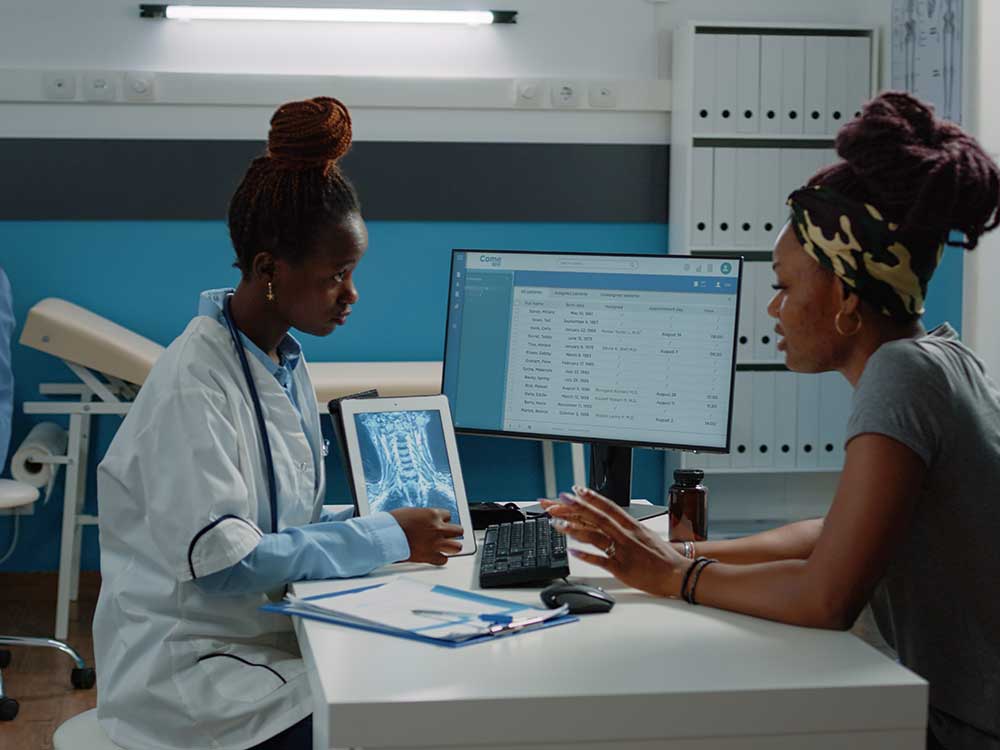The Future of Medical Administration: Patterns and Developments to Enjoy
The Future of Medical Administration: Patterns and Developments to Enjoy
Blog Article
Best Practices in Medical Management for Improving Effectiveness and Decreasing Costs
In the ever-evolving landscape of healthcare, the search of finest practices in clinical management is vital for enhancing performance and suppressing costs. By integrating advanced modern technologies such as electronic health documents and telemedicine, health care suppliers can improve operations and boost individual care.
Leveraging Advanced Innovation
The combination of digital options right into health care systems has actually changed the way facilities operate, improving procedures and enhancing patient care. By centralizing person information, EHRs eliminate the need for troublesome documentation and promote seamless communication amongst health care carriers.
Telemedicine is an additional technological advancement that has actually transformed patient communication. It provides ease for both individuals and healthcare specialists by allowing remote consultations, which can minimize the need for in-person brows through and enhance consultation organizing. Additionally, telehealth systems can extend medical care access to country or underserved locations, connecting voids in care distribution.
Additionally, the usage of Artificial Intelligence (AI) and equipment knowing is coming to be increasingly common in anticipating analytics, enabling very early discovery of prospective wellness issues and more enlightened decision-making. These technologies, when integrated properly, can improve analysis accuracy and customize individual treatment plans, eventually bring about enhanced health care end results and operational effectiveness.
Optimizing Source Allocation
By tactically managing resources such as personnel, equipment, and funds, medical care centers can substantially improve their operational performance, boost individual results, and decrease unnecessary expenses. The very first step in optimizing source allocation involves conducting a comprehensive analysis of existing assets and recognizing areas where resources might be underutilized or exhausted.
Prioritizing source allotment based on person requirements and solution needs is essential. Carrying out versatile staffing models can additionally enhance labor resources by readjusting workers allocation in action to fluctuating client quantities.
Funds need to be carefully checked and assigned with tactical foresight to sustain both temporary operational needs and long-lasting institutional objectives. This consists of investing in training programs that enhance staff proficiencies and taking on energy-efficient practices that decrease operational prices (medical administration). Ultimately, an enhanced source allocation technique promotes a lasting healthcare atmosphere that is receptive, efficient, and economically prudent
Streamlining Process Procedures
When medical care facilities aim to improve operational efficiency, improving process procedures ends up being an essential focus. Effective process reduce redundancy, eliminate unnecessary steps, and boost control amongst medical care experts. This strategy not just increases solution distribution yet also boosts the top quality of patient care.

Following, technology combination plays a significant role in simplifying workflows. Carrying out digital health and wellness documents (EHRs) and computerized doctor order access (CPOE) systems reduces documents, decreases human error, and makes sure details comes to all appropriate employees. Additionally, leveraging telemedicine platforms can enhance person assessments and follow-ups, minimizing the strain on physical infrastructure.

Eventually, structured operations lead you could look here to cost reductions and enhanced individual contentment, cultivating an extra sustainable healthcare atmosphere.
Enhancing Information Administration
Building upon streamlined process, maximizing information monitoring ends up being an essential part ahead of time healthcare administration. Reliable data monitoring systems are important for keeping accurate individual records, boosting decision-making, and ensuring conformity with regulative requirements. By implementing durable information administration solutions, healthcare centers can improve the quality of patient treatment while all at once lowering functional costs.
One trick element of improving data monitoring is the integration of advanced digital health document (EHR) systems. These systems promote the seamless exchange continue reading this of patient details across different divisions, decreasing duplication of examinations and reducing mistakes. A well-designed EHR system sustains data analytics, making it possible for doctor to recognize patterns and make educated decisions pertaining to individual treatment.
Furthermore, guarding client information is paramount. Embracing thorough cybersecurity steps, consisting of security and regular audits, makes sure the honesty and confidentiality of sensitive details. This not just safeguards individuals yet also preserves the establishment's reputation.
Investing in personnel training is an additional crucial aspect. Enlightening healthcare professionals on data monitoring practices improves their capability to successfully make use of technology, resulting in boosted patient outcomes. Finally, boosting data monitoring via advanced technology and extensive training is necessary for attaining performance and cost reduction in medical administration.
Fostering Collaborative Communication
A vital element ahead of time clinical management is promoting collective communication among health care experts. Efficient interaction is vital for making certain smooth individual care, enhancing treatment outcomes, and reducing errors. By encouraging open discussion and control throughout multidisciplinary groups, health care organizations can enhance their functional performance and minimize unneeded expenses.
Central to this method is the integration of interaction modern technologies such as digital health and wellness records (EHRs) and secure messaging systems, which promote the quick exchange of crucial patient details. These devices make it possible for doctor to access and share information in actual time, ensuring that all staff member are informed and straightened in their decision-making processes. Moreover, normal team conferences best site and interdisciplinary rounds can even more advertise a culture of collaboration and liability.
Educating programs concentrated on enhancing communication abilities are likewise essential. These programs can assist staff establish the ability to communicate details clearly and pay attention proactively, therefore lowering misunderstandings and cultivating a helpful work atmosphere. In addition, embracing standard interaction protocols, such as SBAR (Circumstance, History, Assessment, Suggestion), can simplify the exchange of information, guaranteeing that critical details are communicated succinctly and properly. Ultimately, fostering collective interaction brings about improved healthcare shipment and expense financial savings (medical administration).

Final Thought
Integrating innovative modern technology, such as digital wellness documents and telemedicine, along with maximized source allowance and structured process procedures, is crucial for improving effectiveness in medical administration. Effective information management and cultivating joint interaction amongst health care teams are crucial for minimizing redundancies and boosting treatment top quality. By focusing on precautionary care and taking part in top quality enhancement efforts, healthcare companies can attain considerable expense savings and improved person end results, consequently making sure sustainable medical care distribution in a progressively complicated environment.
Report this page